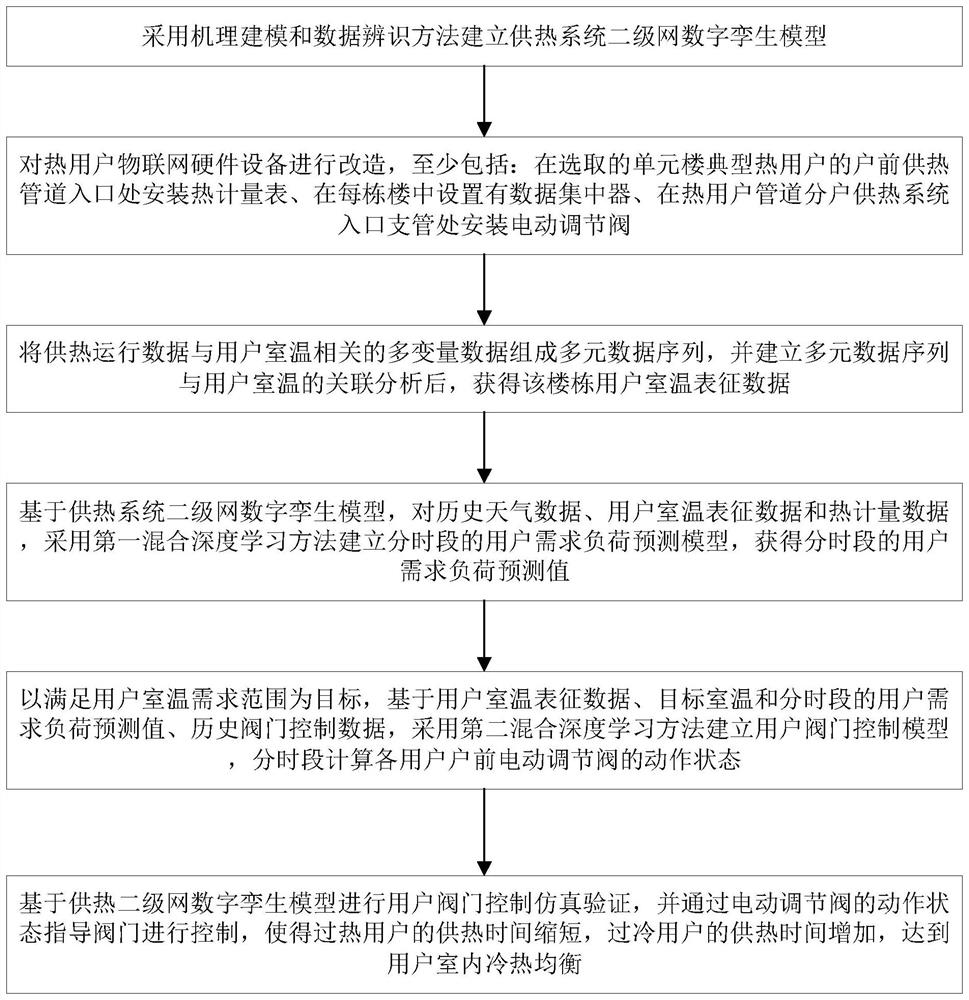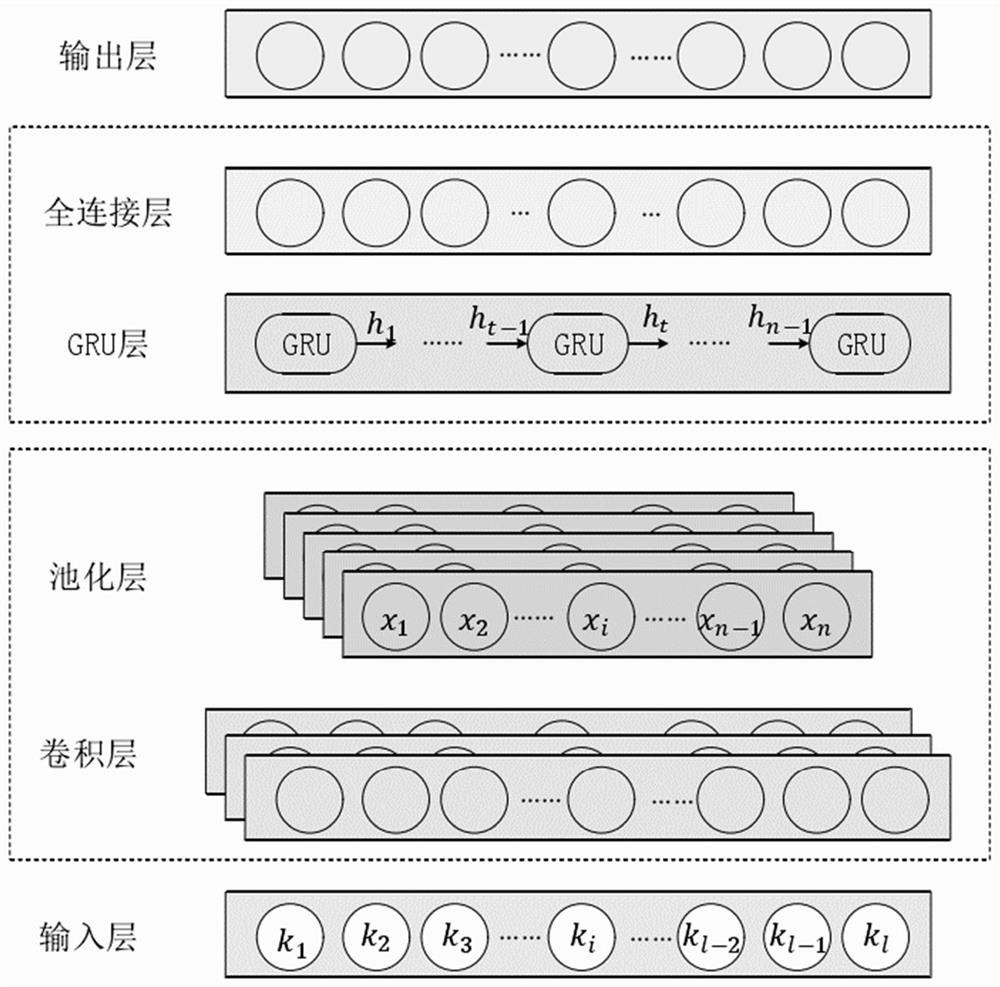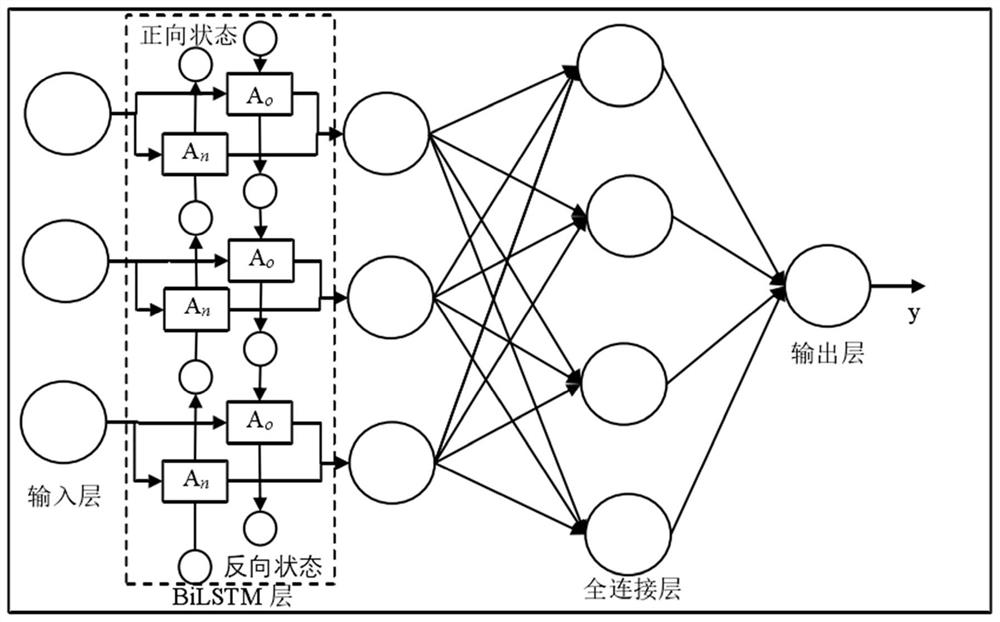Balanced heat supply regulation and control method between secondary network households based on hybrid deep learning
A technology of balanced heating and deep learning, applied in neural learning methods, space heating and ventilation, space heating and ventilation details, etc., can solve problems such as high room temperature, increased system energy consumption, and rising heating parameters. High prediction accuracy, fast prediction efficiency, and the effect of reducing user complaint rate
- Summary
- Abstract
- Description
- Claims
- Application Information
AI Technical Summary
Problems solved by technology
Method used
Image
Examples
Embodiment 1
[0087] figure 1 It is a flow chart of a method for controlling balanced heat supply between secondary network users based on hybrid deep learning involved in the present invention.
[0088] figure 2 It is a schematic diagram of the CNN-GRU network structure involved in the present invention.
[0089] image 3 It is a schematic diagram of the structure of the BiLSTM model involved in the present invention.
[0090] like Figure 1-3 As shown, this embodiment 1 provides a hybrid deep learning-based balanced heating control method between secondary network users, which includes:
[0091] Step S1, using mechanism modeling and data identification methods to establish a digital twin model of the secondary network of the heating system;
[0092] Step S2, transforming the hardware equipment of the Internet of Things for heat users, at least including: installing a heat meter at the entrance of the front heating pipeline of the typical heat user of the selected unit building, sett...
PUM
 Login to View More
Login to View More Abstract
Description
Claims
Application Information
 Login to View More
Login to View More - R&D Engineer
- R&D Manager
- IP Professional
- Industry Leading Data Capabilities
- Powerful AI technology
- Patent DNA Extraction
Browse by: Latest US Patents, China's latest patents, Technical Efficacy Thesaurus, Application Domain, Technology Topic, Popular Technical Reports.
© 2024 PatSnap. All rights reserved.Legal|Privacy policy|Modern Slavery Act Transparency Statement|Sitemap|About US| Contact US: help@patsnap.com










